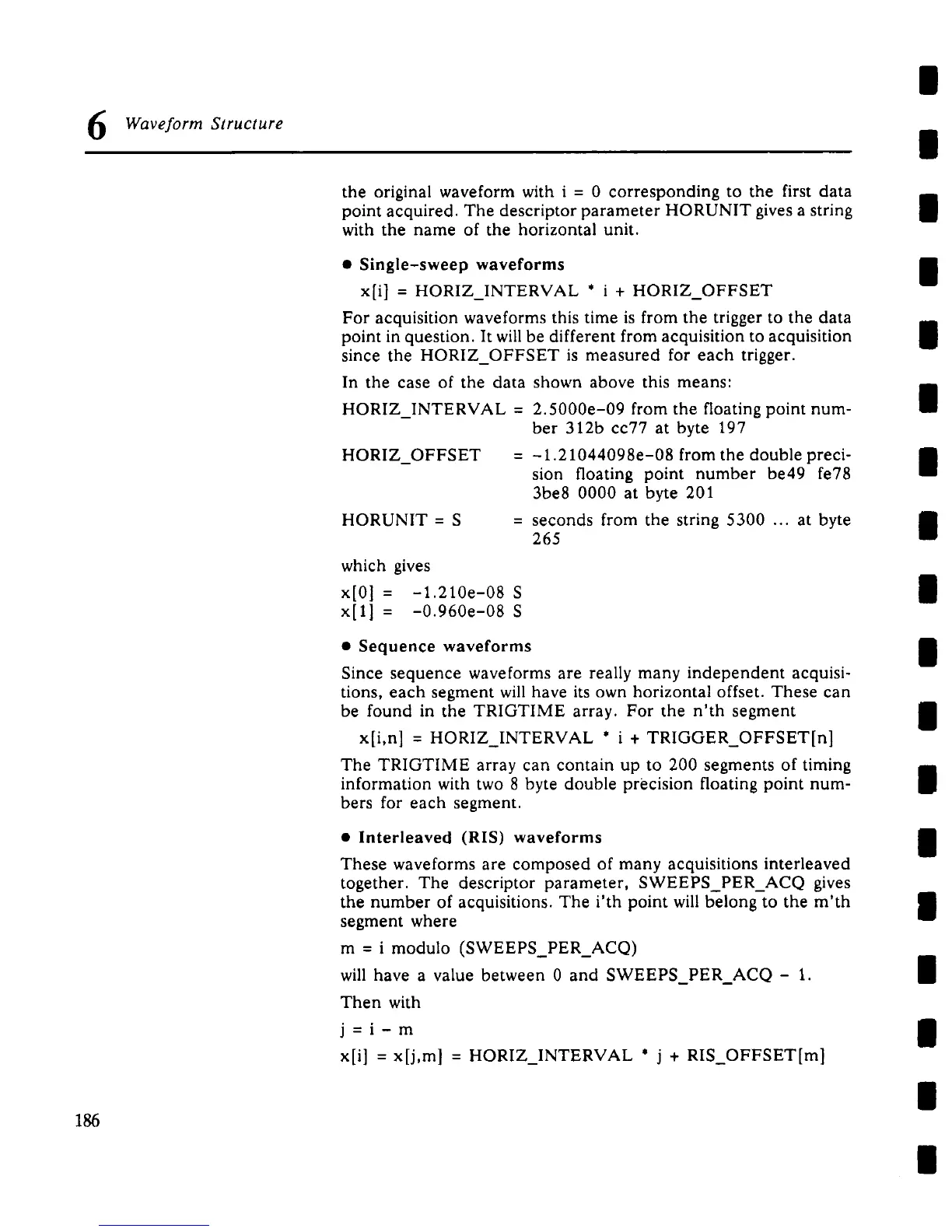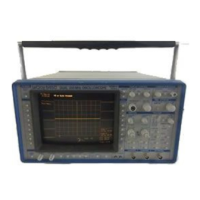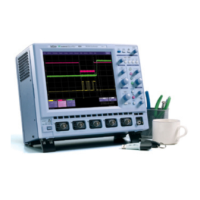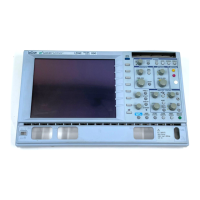Waveform Structure
the original waveform with i = 0 corresponding to the first data
point acquired. The descriptor parameter HORUNIT gives a string
with the name of the horizontal unit.
186
¯ Single-sweep waveforms
x[i] = HORIZ_INTERVAL * i + HORIZ_OFFSET
For acquisition waveforms this time is from the trigger to the data
point in question. It will be different from acquisition to acquisition
since the HORIZ_OFFSET is measured for each trigger.
In the case of the data shown above this means:
HORIZ_INTERVAL = 2.5000e-09 from the floating point num-
ber 312b cc77 at byte 197
HORIZ_OFFSET = -1.21044098e-08 from the double preci-
sion floating point number be49 fe78
3be8 0000 at byte 201
HORUNIT = S = seconds from the string 5300 ... at byte
265
which gives
x[0] = -1.210e-08 S
x[1] = -0.960e-08 S
¯ Sequence waveforms
Since sequence waveforms are really many independent acquisi-
tions, each segment will have its own horizontal offset. These can
be found in the TRIGTIME array. For the n’th segment
x[i,n] = HORIZ_INTERVAL * i + TRIGGER_OFFSET[n]
The TRIGTIME array can contain up to 200 segments of timing
information with two 8 byte double precision floating point num-
bers for each segment.
¯ Interleaved (RIS) waveforms
These waveforms are composed of many acquisitions interleaved
together. The descriptor parameter, SWEEPS_PER_ACQ gives
the number of acquisitions. The i’th point will belong to the m’th
segment where
m = i modulo (SWEEPS_PER_ACQ)
will have a value between 0 and SWEEPS_PER_ACQ - 1.
Then with
j=i-m
x[i] = x[j,m] = HORIZ_INTERVAL * j + RIS_OFFSET[m]

